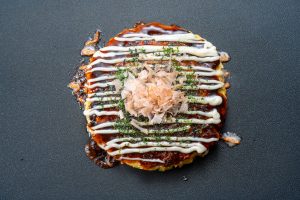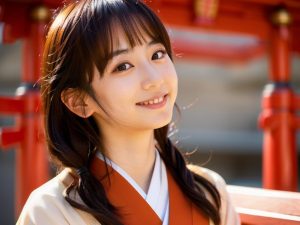When it comes to symbols of Japanese culture, “swords” naturally come to mind. With their exquisite form, intricate craftsmanship, and long history, Japanese swords, or “katanas,” continue to captivate people around the world. They often appear in historical dramas and anime, radiating both power and elegance.
Interestingly, the Japanese katana is often mistaken for a “sword” in the Western sense. However, Japanese swords have entirely distinct characteristics. In this article, we’ll explore the history, types, interesting trivia, and some must-visit destinations related to Japanese swords.
The History of Japanese Swords

Let’s start by tracing the origins and evolution of Japanese swords.
The Origin of Swords: From Straight to Curved Elegance
The roots of Japanese swords can be traced back to the Asuka period (5th–6th century). During that time, swords influenced by continental cultures were prevalent, and these were known as chokuto (straight swords). As the name suggests, they had a straight blade, reminiscent of Western swords and Chinese bronze swords. These swords were used not only as weapons but also in religious ceremonies and as decorative items.
However, during the Heian period, straight swords transformed into uniquely curved Japanese swords. This characteristic curve was more than just a design element—it was practical. For example, the curve made it more effective during horseback combat, allowing a deeper cut with less effort.
The Kamakura Period: The Evolution Amid Constant Warfare
The Kamakura period (1185–1333) marked the true emergence of Japanese swords. During this era of frequent warfare led by samurai, increased demand resulted in advancements in their practicality and quality. Renowned swordsmiths such as Masamune of Sagami Province (Soshu Masamune) and Mitsutada of Bizen Osafune became legendary figures whose works fused aesthetic intricacy with functional excellence. These masters crafted blades treasured by samurai as key tools of their trade.
The Muromachi Period: Swords as Works of Art
The Muromachi period (1336–1573) saw Japanese swords transcend their role as mere weapons to become works of art. Swordsmiths across Japan honed their craft, perfecting details such as hamon (blade patterns) and distinctive blade shapes. Their attention to detail elevated the katana to a revered art form. This was a time when swords gained recognition not only for their functionality but also as representations of artisans’ skill.
What Types of Japanese Swords Exist?
When people think of Japanese swords, they often imagine a “katana” or “tachi.” However, there are many variations, categorized by design and purpose. Let’s take a look at the primary types of Japanese swords.
Tachi
The tachi was widely used from the Heian period to the Muromachi period. It was designed for mounted warriors, ideal for combat on horseback. Its defining feature was a blade with a pronounced curve that enhanced cutting performance. The tachi was worn with the cutting edge facing down while in the scabbard.
Uchigatana
The uchigatana emerged during the Muromachi period and gained prominence in the Edo period. Unlike the tachi, which was suited for combat in armor, the uchigatana was lighter and more practical for everyday self-defense. It was worn with the blade edge facing upward for quick-draw efficiency, becoming symbolic of samurai culture.
Wakizashi
The wakizashi was a shorter sword often paired with the katana. Compact and easier to maneuver, it was valued for its utility in close combat. The legend of Miyamoto Musashi and his dual-sword fighting style showcases the prominence of the wakizashi.
Tanto
Among the smallest Japanese swords, the tanto served a variety of purposes, including personal defense and ceremonial use. While small in size, its sharpness and functionality made it indispensable. Women also carried tanto blades, viewing them as essentials for personal protection.
The Beauty of Japanese Swords: What is Hamon?

One of the most admired aspects of Japanese swords is the hamon, the unique pattern running along the blade. This beautiful wave-like design results from the careful combination of metals with different hardness levels. Crafted through meticulous hand-folding and differential cooling techniques, each hamon reflects the personality and skills of its creator. As a result, swords bearing intricate hamon designs are often prized as collectible works of art.
Fascinating Trivia About Japanese Swords
Specially Designed for “Cutting”
Unlike Western swords designed for striking or thrusting, Japanese swords specialize in cutting. The sharpness of the edge, combined with the blade’s curve, makes them highly effective for delivering clean, precise cuts. This functionality demonstrates the exceptional metallurgical techniques of Japanese swordsmiths.
The Practice of Tameshigiri (Test Cutting)
In the Edo period, a method called tameshigiri (test cutting) was used to assess a sword’s sharpness and durability. These tests employed various materials, from straw bundles and bamboo to deceased human bodies in the practice known as “shinin tameshi” (testing with deceased individuals). The results of tameshigiri greatly influenced the reputation of both the blade and its maker. Swords with exemplary test results fetched high prices and earned significant prestige.
How to Handle Japanese Swords with Respect

In Japan, swords are considered sacred objects. Handling them requires knowledge of proper etiquette:
- Don’t touch the blade: Oil from fingertips can cause rusting, so always use cloth when touching the sword.
- Never place a sword on the ground: It’s considered disrespectful to place such a sacred object directly on the floor.
- Use proper storage or display procedures: Store swords in specialized racks, cases, or protective wraps for preservation.
Must-Visit Destinations for Sword Enthusiasts
The Japanese Sword Museum (Tokyo)
Located in Tokyo’s Sumida Ward, the Japanese sword museum exhibits a wide range of swords and explains their history and production processes. It’s a must-visit for both enthusiasts and newcomers.
The Bizen Osafune Sword Museum (Okayama)
“The Bizen Osafune Sword Museum”, located in the famous sword-making region of Bizen, offers demonstrations of the sword-making process. Visitors can witness master swordsmiths at work—an unforgettable experience!
Nagoya Castle (Aichi)
Nagoya Castle occasionally holds exhibitions of famous Japanese swords. Visiting the castle provides the opportunity to learn about these masterpieces in a historical context.
Conclusion
Japanese swords are more than just weapons—they are manifestations of Japan’s rich culture, meticulous craftsmanship, and deep respect for beauty. From their history and diverse styles to their aesthetic elements like hamon, Japanese swords are truly captivating. Why not take this opportunity to deepen your knowledge and appreciation for these masterpieces?















